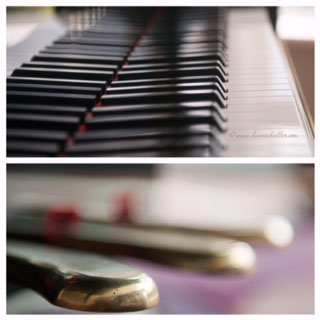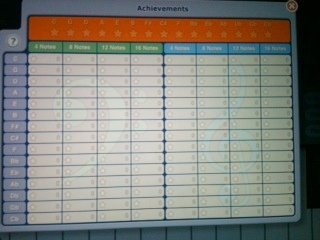Have you ever had a student who needed to be inspired by a really exciting performance of a piece they were learning. Even more exciting than you, yourself, playing for them? I have had many of those moments and for that reason having my I-Pad ready to use U-Tube is fantastic. It just takes moments to type a search for the piece or even a certain performer. Even better, I search before the lesson and the video is ready to go when they arrive in my studio, right on the piano music stand.
Perhaps I need my student to see a minuet being danced for them to feel the music they are playing. Or, as I needed recently, a video showing the art of the time period. I found a video entitled "The Loves of Emma Bardac" which is a docudrama of the life of Emma who had a relationship with Gabriel Faure and who later married Claude Debussy. Both of these composers wrote music for her daughters. The music was played by Katia and Marielle Labeque, concert pianists who are sisters, from France.
They were dressed as impressionist paintings and the beauty of their playing was something I needed my student to see. She and I have learned two of the pieces from the Dolly Suite, by Gabriel Faure. I did not show the whole video to my student, but the few minutes of enrichment helped us both feel excited to learn one more piece from the suite.
In case you would like to know more about this story, here is a brief summary.
Emma Bardac (1862–1934), née Moyse, was the mutual love interest of both Gabriel Fauré andClaude Debussy. Of Jewish descent, Emma married, aged 17, Parisian banker Sigismond Bardac, by whom she had two children, Raoul, and Hélène (later Madame Gaston de Tinan (1892–1985)). Emma was an accomplished singer and brilliant conversationalist. Fauré wrote his Dolly Suite in the 1890s for Hélène and La bonne chanson for Emma herself.
Perhaps I need my student to see a minuet being danced for them to feel the music they are playing. Or, as I needed recently, a video showing the art of the time period. I found a video entitled "The Loves of Emma Bardac" which is a docudrama of the life of Emma who had a relationship with Gabriel Faure and who later married Claude Debussy. Both of these composers wrote music for her daughters. The music was played by Katia and Marielle Labeque, concert pianists who are sisters, from France.
They were dressed as impressionist paintings and the beauty of their playing was something I needed my student to see. She and I have learned two of the pieces from the Dolly Suite, by Gabriel Faure. I did not show the whole video to my student, but the few minutes of enrichment helped us both feel excited to learn one more piece from the suite.
In case you would like to know more about this story, here is a brief summary.
Emma Bardac (1862–1934), née Moyse, was the mutual love interest of both Gabriel Fauré andClaude Debussy. Of Jewish descent, Emma married, aged 17, Parisian banker Sigismond Bardac, by whom she had two children, Raoul, and Hélène (later Madame Gaston de Tinan (1892–1985)). Emma was an accomplished singer and brilliant conversationalist. Fauré wrote his Dolly Suite in the 1890s for Hélène and La bonne chanson for Emma herself.
After her affair with Fauré, Emma was introduced to Debussy in late 1903 by her son Raoul, one of his students.[1] Emma and Sigismond were divorced on 4 May 1905, and she eventually married Debussy in 1908. Bardac had a child by Debussy, a daughter, Claude-Emma, nicknamed 'Chou-Chou' (born 30 October 1905), and dedicatee of his Children's Corner Suite composed in 1909. Claude-Emma died of diphtheria in 1919, the year after her father's death. Emma Bardac died in 1934 and, like Claude-Emma, was laid to rest in Debussy's grave in the Cimetière de Passy in Paris.
In a documentary film called The Loves of Emma Bardac directed by Thomas Mowrey, the accomplished duo-pianists Katia and Marielle Labeque perform a selection of pieces by composers Bizet, Fauré and Debussy.


















